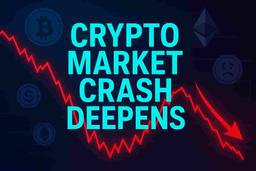CLSA Chief Equity Strategist Alexander Redman sees India as a prime rotation opportunity for global investors by 2026, as capital may shift away from North Asia's artificial intelligence trade. While maintaining an overweight stance on Indian equities, he notes recent market adjustments and highlights potential risks in the US AI sector and economy.
CLSA Chief Equity Strategist Alexander Redman has indicated that India could emerge as a significant rotation opportunity for global investors in 2026, potentially attracting capital reallocating from the North Asia artificial intelligence (AI) trade.
Redman continues to recommend an "overweight" stance on Indian equities, signifying a positive outlook, although his allocation is less pronounced than in the previous year. He observed that India has undergone a notable adjustment phase over the past 12 to 18 months, which included downward revisions to GDP and earnings forecasts, modest currency depreciation, a dip in return on equity, foreign investor outflows, and a peak in deal flow. He also noted a slight compression in market valuations.
Despite these adjustments, Redman asserted that India's core investment case remains robust. He believes that by 2026, India could serve as an attractive refuge for investors looking to diversify away from North Asia.
Regarding trade, Redman anticipates progress on the India-US tariff deal, suggesting that tariffs may be reduced from current levels, potentially compressing beyond 25% as has happened in similar trade patterns previously.
On broader macroeconomic concerns, Redman expressed apprehension about a potential AI bubble forming in the United States, citing stretched valuation metrics that have surpassed those seen during the dot-com era. He pointed out that current S&P 500 earnings growth forecasts appear significantly above the long-term trend, raising questions about the sustainability of US technology capital expenditure. He also mentioned risks such as circular financing, the depreciation of GPU assets, and the potential for commoditization.
Furthermore, Redman highlighted risks within the US economy, including the Federal Reserve's heightened focus on the labor market, predicting a decline in month-on-month payroll changes. While inflation remains a concern, consumer credit stress is appearing in certain segments, though overall household balance sheets are relatively stable. A more significant worry for Redman is the US government's balance sheet, with projected rising debt-to-GDP ratios and interest costs.
Impact
This news carries considerable weight for Indian stock market investors, offering insights into global capital flow dynamics and future investment trends. A prominent strategist like Redman's view can influence investor sentiment and strategic allocation decisions, potentially leading to increased foreign investment inflows into India. Rating: 8/10.
Difficult Terms
Rotation Opportunity: A situation where investors shift capital from one asset class, sector, or region to another, seeking better returns or reduced risk.
North Asia: Typically refers to East Asian countries like China, South Korea, and Taiwan, often associated with technology manufacturing.
Overweight Stance: An investment recommendation to hold a significantly larger proportion of a particular asset or sector than its weighting in a benchmark index, reflecting a belief in its superior performance.
Gross Domestic Product (GDP): The total monetary value of all finished goods and services produced within a country's borders in a specific time period.
Currency Depreciation: A decrease in the value of a currency relative to other currencies in the foreign exchange market.
Return on Equity (ROE): A profitability ratio that measures how effectively a company uses shareholder investments to generate profits. It is calculated as Net Income / Shareholders' Equity.
Foreign Investor Outflows: The selling of assets by foreign investors in a particular country, leading to capital leaving that country.
Deal Flow: The volume and frequency of transactions, such as mergers, acquisitions, and investment deals within a market.
Valuations: The process of determining the current worth of an asset or a company, often used to assess investment attractiveness.
Tariff: A tax imposed by a government on imported goods or services.
AI Bubble: A speculative market phenomenon where the prices of artificial intelligence-related assets rise excessively due to irrational exuberance and investor demand, often leading to a subsequent crash.
Price-to-Sales (P/S) Ratio: A valuation metric that compares a company's stock price to its revenue per share. It indicates how much investors are willing to pay for each dollar of a company's sales.
Internet Bubble (Dot-com bubble): A period of rapid growth and subsequent collapse in the stock market valuations of internet-based companies in the late 1990s and early 2000s.
S&P 500: A stock market index representing 500 of the largest publicly traded companies in the United States.
Capital Expenditure (Capex): Funds used by a company to acquire, upgrade, or maintain long-term physical assets such as property, plant, or equipment.
Hyper-scalers: Cloud computing providers capable of managing and scaling infrastructure to support extremely large workloads, such as Amazon Web Services, Microsoft Azure, and Google Cloud.
Circular Financing: A financial practice where borrowed funds are used to repay existing debt, potentially creating a misleading picture of financial health.
GPU (Graphics Processing Unit): A specialized electronic processor designed to rapidly manipulate and alter memory to accelerate the creation of images and is critical for AI model training.
Commoditization: The process by which products or services become indistinguishable from those offered by competitors, often leading to price-based competition.
Federal Reserve: The central banking system of the United States.
Labor Market: The supply and demand for labor, representing the number of jobs available and the number of people seeking employment.
Inflation: The rate at which the general level of prices for goods and services is rising, leading to a decrease in purchasing power.
Delinquencies: The failure to make scheduled payments on a loan or debt.
Global Financial Crisis (GFC): A severe worldwide economic crisis that occurred in the late 2000s, characterized by the collapse of financial markets.
Debt-to-GDP Ratio: A measure comparing a country's total government debt to its Gross Domestic Product (GDP), indicating its ability to repay its debts.

